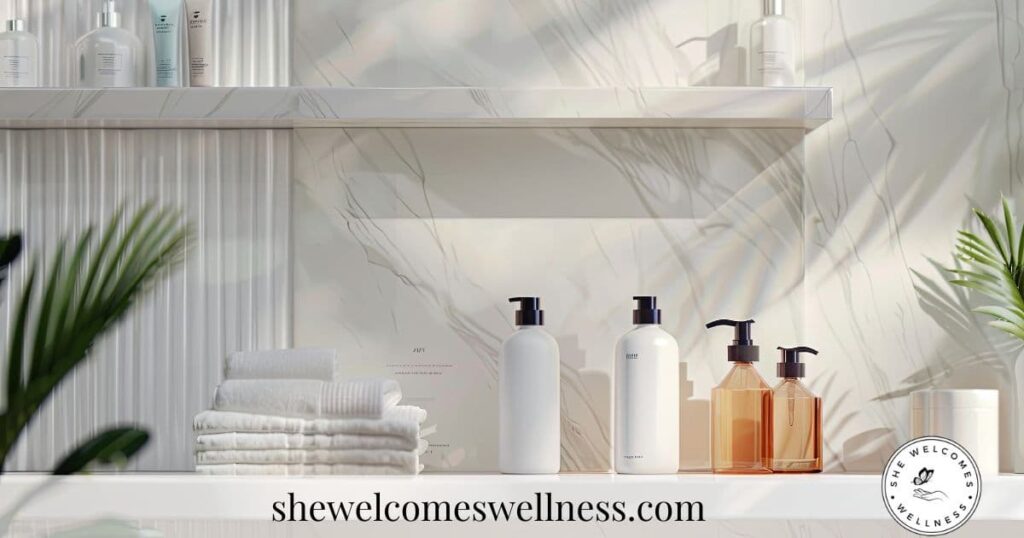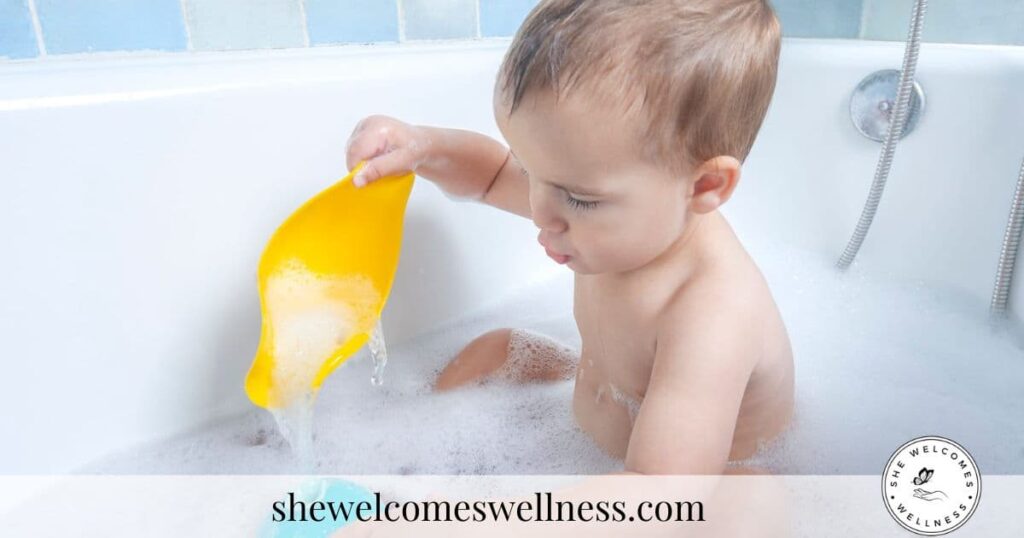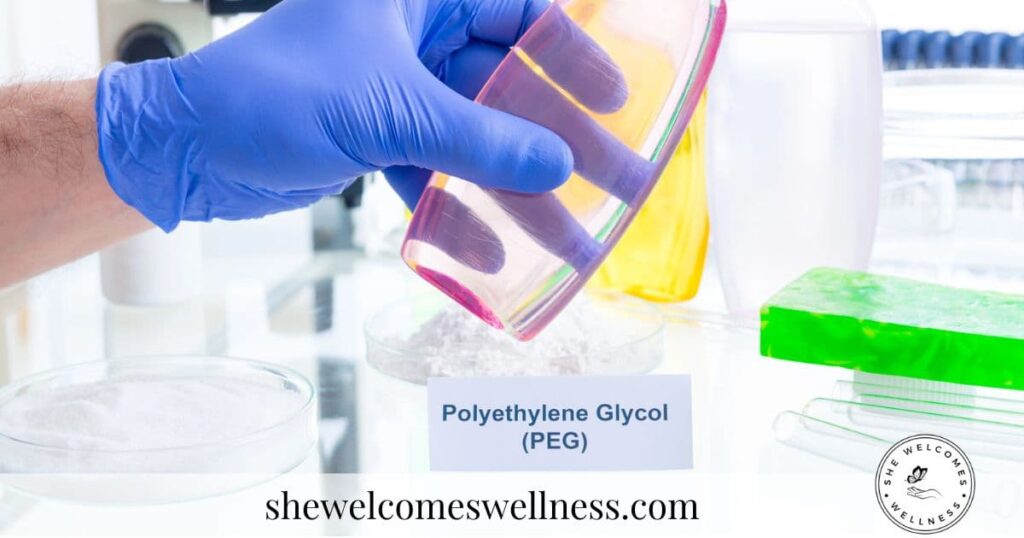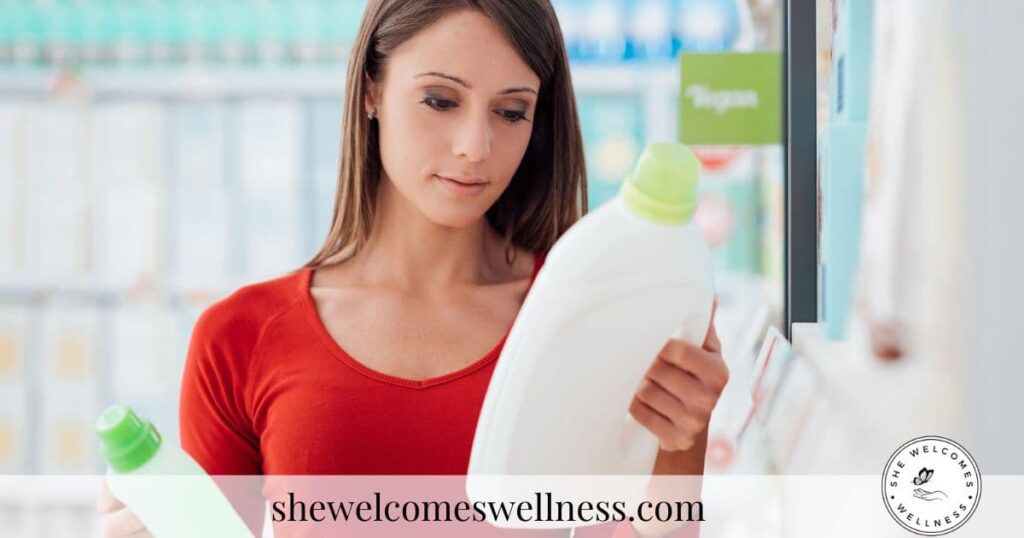When you’re picking personal care products, you try to make safe, gentle choices—especially if you’re reaching for “clean” or natural brands.
But what is 1,4-dioxane, and why should you care if it’s hiding in your cosmetics or laundry detergent?
This hidden chemical can sneak into products, even when the label may look pretty good.
The more I dug into it, the more I realized how widespread—and concerning—this 1,4-dioxane really is.
Knowing why this matters and how to spot it will help you protect your health and make smarter choices for you and your family.
Ready? Let’s get started.
This post contains affiliate links, which means I may receive a commission if you purchase through my links (at no extra cost to you). This helps me to keep this site ad-free. As an Amazon Associate, I earn from qualifying purchases. As a Counter Brand Partner, I may earn commissions from qualifying purchases made through my links. Please read my full disclosure and affiliate disclosure for more information.
Table of Contents
ToggleWhat is 1,4-Dioxane?
So, what is 1,4-dioxane exactly?
You won’t find 1,4-Dioxane listed on any product label — but it may still be hiding in your shampoo, baby wash, or even products labeled as “clean.”
That’s because it’s not an ingredient companies add on purpose.
It’s a chemical byproduct that forms during manufacturing.
Most people have never heard of it, but it’s surprisingly common — and potentially harmful. Even in some so-called clean beauty products.
It’s most commonly created when ethoxylation is used to make harsh ingredients milder.
That’s why it will often be found in products made with things like Sodium Laureth Sulfate, PEG compounds, and polysorbates.
Because 1,4-Dioxane is a contaminant, and not an intentionally added ingredient, companies aren’t required to disclose it. (Which makes me so mad!)
And that makes it especially tricky to avoid, unless you know what to look for.
Why It Can Be Hiding in “Clean” Products

One of the most frustrating things about 1,4-Dioxane is where it shows up — even in products that are marketed as gentle, natural, or even non-toxic.
Just because something claims to be “clean” doesn’t mean it’s free from contamination.
These clean and natural labels aren’t regulated, so they don’t have a universal meaning.
In fact, many “clean” labels rely on ethoxylated ingredients that may carry 1,4-dioxane as a hidden byproduct, even if the product looks safe on the surface.
Because it’s not required to be disclosed, this chemical can easily slip under the radar, especially in brands that use green packaging or vague ingredient claims.
Greenwashing is rampant, and marketing language isn’t enough.
This is why understanding how to read ingredient labels is so important.
How Do Brands Get Away With This?
Many mainstream and even “clean” or “natural” brands use loopholes in labeling laws to avoid disclosing contaminants like 1,4-dioxane.
Unfortunately, in the US–as long as the ingredient itself isn’t added intentionally, it doesn’t have to appear on the label.
No matter how misleading the marketing may be.
Greenwashing, again.
Why You Should Avoid It

The first step to avoiding exposure is learning what 1,4-dioxane is and how to recognize ingredients that may be contaminated with it.
There are many reasons we should avoid 1,4-dioxane. Here are a few:
- Classified as a probable human carcinogen by the EPA
- Can penetrate the skin, inhaled during use, or ingested in trace amounts through personal care
- Found in many products marketed as “gentle” or even “natural” due to the ethoxylation process. This one makes me extra-mad!
- Not required on ingredient labels, which means it can be hiding in otherwise “safe-seeming” products
- Long-term exposure has been linked to organ toxicity and cancer in animal studies
According to the Campaign for Safe Cosmetics, 1,4-dioxane has been detected in shampoos, baby wash, body wash, and even some household cleaners. The FDA has acknowledged the concern, but does not currently require its removal.
Instead, manufacturers are simply encouraged to take voluntary steps to reduce contamination. So frustrating!
Where You’ll Find 1,4-Dioxane

You’ll most often find 1,4-dioxane lurking in foaming products like:
- Shampoos
- Body washes
- Toothpastes
- Bubble baths
- Facial cleansers
- Baby soaps
- Dish soap
- Laundry detergents
It can also show up in household cleaners–especially those labeled with terms like “gentle” or “for sensitive skin.”
How to Avoid It

To avoid 1,4-dioxane, you must read ingredient labels. Look for ingredients that have been ethoxylated.
You can often identify ethoxylated ingredients by the “eth” in the name — like Sodium Laureth Sulfate, Ceteareth-20.
Ingredients that start with PEG (like PEG-40 Stearate) are also ethoxylated and are likely contaminated with 1,4-dioxane.
Even though 1,4-Dioxane won’t show up on the label, look for these red flags that it may be present in the product:
- PEG
- polyethylene
- polyethylene glycol
- polyoxyethylene
- -eth (e.g., Laureth , Ceteareth)
- -oxynol
What to Use Instead

Thankfully, there are plenty of safer alternatives that don’t rely on ethoxylation — and they clean just as well (if not better).
To avoid ethoxylated ingredients, look for products that are made with non-toxic, plant-based cleansers. These don’t undergo the same risky chemical processing.
Some examples are:
- Coco Glucoside
- Decyl Glucoside
- Sodium Cocoyl Isethionate
These gentle surfactants are derived from coconut or sugar and are generally considered safer and less irritating—even for sensitive skin.
Safer Swaps I Trust
If you’re not sure where to start, here are a few of my go-to products that avoid 1,4-dioxane and other questionable ingredients.
These are brands I’ve personally vetted, used on my own skin (and in my home), and feel confident recommending—because I trust both the ingredients and the results.
Multipurpose Cleaner:
Force of Nature Starter Kit – A non-toxic cleaning system made from salt, water, and vinegar—electrolyzed into a powerful disinfectant.
👉 Use my link and my Force of Nature discount code START 40 to save 40%.
Skincare:
Skin Softening Cleanser:
Counter Silky Skin Cleanser – A creamy, skin-softening cleanser that dissolves makeup and impurities while replenishing hydration.
For Brightening:
Counter All Bright Vitamin C Serum – Powered by two ultra-stable forms of vitamin C to deliver instant luminosity and a renewed glow.
For Age-Defying Support:
Counter Retinatural+ Advanced Super Serum – Formulated with plant-derived Retinatural Complex and nasturtium flower extract for visibly revitalized skin.
For Hydration:
Counter Counterglow Hyaluronic Moisture Mist – Lightweight and fast-absorbing with micro hyaluronic acid for a dewy glow.
Daily Moisturizer:
Counter Antioxidant Soft Cream – A nourishing formula with bakuchiol and alpine rose to support skin health and radiance.
Facial Cleansing Bar:
Crunchi’s Gentle Facial Bar – An ultra-mild facial cleanser that helps cleanse, replenish moisture, and remove impurities from the skin.
Your next step
Not sure where to start with safer swaps? You don’t have to do it all at once. Start with just one product—especially something you use daily or don’t rinse off.
Download my free Clean Beauty Guide for a beginner-friendly cheat sheet, links to safer product picks, and ingredients to watch for.
The Bottom Line

1,4-Dioxane is one of the sneakier toxic ingredients out there—even in products that look clean.
But now you know what to look for (hint: ingredients ending in “-eth” or “PEG”).
That one bit of label knowledge can help you skip a ton of exposure.
Small swaps lead to big change—one product at a time.
You don’t have to do it perfectly. Just start.
Want to Learn More?
This post is part of my Toxic Ingredients to Avoid series. Now that you’ve got 1,4-dioxane covered, check out:
👉 15 Toxic Ingredients to Avoid in Skincare – to help you spot more hidden hazards in your personal care products.